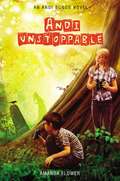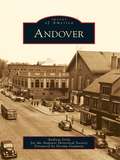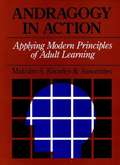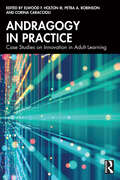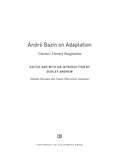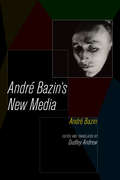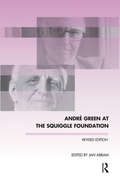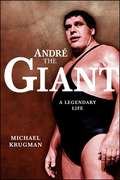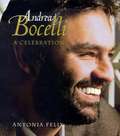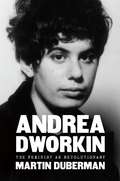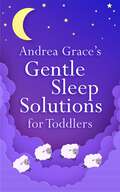- Table View
- List View
Andha Vadhakaya - අඳවාදකයා
by Dadigama V. Rodrigo - දැදිගම වි. රුද්රිගුමනෝවිද්යාත්මක කරුණුවලින් පොහොසත් වූ මේ නවකතාව කරලෙන්කෝ ගේ පෞද්ගලික නිරීක්ෂණයේ ප්රතිඵලයකි.
Andhura vinividha eliya dhakinnata: අඳුර විණිවිද එලිය දකින්නට
by Ven. Kiribathgoda Gnananandha Thero — පූජ්ය කිරිබත්ගොඩ ඥානානන්ද හිමිවාද විවාදවලින් ආකූල ව්යාකූලව සිටින නූතන මිනිසාට අධර්මයෙන් ධර්මය වෙන් කර ගැනීමට සහය වීමේ අරමුණින් ලියැවුණු බෞද්ධ ග්රන්ථයකි.
Andi Under Pressure
by Amanda FlowerTwelve-year-old Andora ‘Andi’ Boggs and her new best friend Colin Carter couldn’t be more excited to attend the prestigious science camp at the local university in Killdeer, Ohio. Unfortunately, Discovery Camp’s curriculum appears to include much more than just chemistry and biology. From day one, the university is plagued by a series of pranks—missing markers, loose crickets, and stolen scales. Campus security blames the mysterious janitor Polk, but even though Andi agrees he’s acting suspicious, she can’t believe the gentle old man would do anything illegal. Then one prank goes too far and their chemistry professor is injured by an explosion in the lab, upping the stakes of the investigation. Andi and Colin must unravel the secrets behind the chemistry department and Polk’s dark past before danger closes the camp for good. Praise for the series: 2013 Agatha Award Nominee “In the upstanding tradition of Nancy Drew and Harriet the Spy, Andi is spunky and unafraid to take risks” – Booklist “A fun little detective story with some simple life lessons.” – Kirkus Reviews “Flower creates a cast of memorable characters and a colorful, historically detailed setting.” – Publishers Weekly
Andi Unstoppable
by Amanda FlowerAndi Boggs and her best friend Colin Carter are at it again … in this third book of the Andi Boggs series, Andi Unstoppable, school has begun for the two Killdeer middle schoolers and the science teacher has a great idea! He is an expert birder and wants his class to share in the fun. In a birding group with Colin and her biggest school rival, Ava, Andi sets out to be the first student in class to spot the elusive Kirtland warbler but ends up spotting the town’s resident ghost instead! Together with her friends, Andi takes on another small town mystery—is the legend of the ghost of Dominika Shalley more than just a story? And does her sudden appearance have anything to do with the holes the friends find in the Shalley graveyard as they look for the rare bird?
Andile Mji and the taste of numbers
by Glanice Masilo Kamogelo MatlaweReader: Level – First Paragraphs
Andina Bottling Co.
by V. G. Narayanan Alberto BallveAndina Bottling develops an information system for monitoring the performance and operations of its various foreign and domestic subsidiaries.
Andina: The Heart of Peruvian Food: Recipes and Stories from the Andes
by Martin MoralesAndina is the cuisine of the Andes of Peru. Welcome to one of the most contemporary yet ancient cuisines in the world. Featuring over 110 delicious and unfussy recipes accompanied by fascinating stories, dazzling photography and beautiful paintings, Andina is the first ever book to capture the food and scenery of the Andes and the spirit of its people and traditions.Andina also signifies a dish, an ingredient or a lady from the Andes. Martin Morales’s grandmother was an andina and here he pays homage to her and all the women chefs (picanteras) who have shaped this soulful and traditional cuisine, which is at the heart of Peruvian food.For the last 15 years, Martin has travelled throughout the Peruvian Andes to collect simple, traditional recipes, magical stories and culinary inspiration. With dishes dating back thousands of years, alongside new creations by Martin Morales and his team of chefs who run the award-winning Andina restaurants, Andina’s recipes have big flavours, vibrant colour and are simple to cook at home. From light, raw dishes to hearty stews and soups; cheeky bites to exquisite roasts; and sweet, aromatic desserts to comforting hot drinks, Andina presents authentic, nutritious all-day and all-year-round food made with seasonal ingredients.
Andonix: Building Businesses in Turbulent Times
by Lynda M. ApplegateCase. Andonix: Building Businesses in Turbulent Times.
Andover
by Andrew Grilz Norma Gammon Andover Historical SocietyAndover, geographically one of the largest townships in the Commonwealth of Massachusetts, has a long and illustrious history. Founded more than 350 years ago, Andover has played a part in several critical events in American history, including the French and Indian wars, the witchcraft hysteria of the 1690s, the American Revolution, the abolitionist movement, the Civil War, and the Industrial Revolution. It is the birthplace of the song "America," written by Samuel Francis Smith. It has been the home of such notables as Anne Bradstreet, the first poet in the New World; Salem Poor, former slave and hero of the Battle of Bunker Hill; Samuel Osgood, the first postmaster general of the United States; and Harriet Beecher Stowe, author of Uncle Tom's Cabin. It is home to the Andover Village Improvement Society, the second-oldest land conservation group in America. Pres. Franklin Pierce called Andover his summer home, and countless leaders of business and government resided in Andover while students at Phillips Andover Academy, one of the most prestigious private academies in the country.
Andover in the Civil War: The Spirit and Sacrifice of a New England Town (Civil War Series)
by Joan Silva PatrakisThey departed Boston in August 1861 to a cheering crowd and the tune of "John Brown's Body."? Though some of these Andover soldiers would not "see the elephant"? until two years later, more than a quarter of them would never return to their beloved hometown. Drawing on journals, letters and newspaper articles, Andover in the Civil War chronicles the journey of these brave men and brings to life the efforts of those who remained on the homefront. Harriet Beecher Stowe and Elizabeth Stuart Phelps were just two Andover citizens who threw themselves wholeheartedly into the Union cause. Lesser known but equally impressive was Robert Rollins, who migrated to Andover in 1863 and enlisted in the North's first all-black regiment. Historian Joan Silva Patrakis introduces many more patriotic characters and moving stories from this "Hill, Mill and Till"? town during the bloodiest years of America's history.
Andragogy in Action: Applying Modern Principles of Adult Learning
by Associates Malcolm S. KnowlesProvides over thirty case examples from a variety of settings illustrating andragogy (principles of adult learning) in practice.
Andragogy in Practice: Case Studies on Innovation in Adult Learning
by Elwood F. Holton III, Petra A. Robinson, and Corina CaraccioliAndragogy in Practice is a timely book of case studies, which offers readers the opportunity to see andragogy in practice solving real-world challenges in a variety of adult learning contexts. It highlights the wonderful range of innovative practices that characterize adult learning today.Holton, Robinson, and Caraccioli, authors of the bestselling The Adult Learner, bring a variety of diverse and inspiring extended cases together from a range of experienced teaching and learning specialists. Showing the broad scope, power, and potential of adult learning using andragogy, case topics include Artificial Intelligence, Online Learning in Higher Education, Human Resource and Leadership Development, Curriculum and Faculty Development and Art-Based Learning. The book can be used in conjunction with The Adult Learner or as a standalone text and provides a wealth of resources for educators, students, and practitioners looking to further their understanding of how andragogy is being applied in new and innovative ways. Experienced adult educators will be challenged to be more innovative in their own practices. For reflection and further dialog, each case includes a set of discussion questions to enhance engagement and understanding.Students and practitioners of human resource development and adult education will enjoy the engaging, innovative, and insightful cases in this book addressing andragogical practices in the contemporary society.
Andre Bazin on Adaptation: Cinema's Literary Imagination
by André BazinAdaptation was central to André Bazin’s lifelong query: What is cinema? Placing films alongside literature allowed him to identify the aesthetic and sociological distinctiveness of each medium. More importantly, it helped him wage his campaign for a modern conception of cinema, one that owed a great deal to developments in the novel. The critical genius of one of the greatest film and cultural critics of the twentieth century is on full display in this collection, in which readers are introduced to Bazin's foundational concepts of the relationship between film and literary adaptation. Expertly curated and with an introduction by celebrated film scholar Dudley Andrew, the book begins with a selection of essays that show Bazin’s film theory in action, followed by reviews of films adapted from renowned novels of the day (Conrad, Hemingway, Steinbeck, Colette, Sagan, Duras, and others) as well as classic novels of the nineteenth century (Bronte, Melville, Tolstoy, Balzac, Hugo, Zola, Stendhal, and more). As a bonus, two hundred and fifty years of French fiction are put into play as Bazin assesses adaptation after adaptation to determine what is at stake for culture, for literature, and especially for cinema. This volume will be an indispensable resource for anyone interested in literary adaptation, authorship, classical film theory, French film history, and André Bazin’s criticism.
Andre Bazin's New Media
by Dudley Andrew André BazinAndré Bazin's writings on cinema are among the most influential reflections on the medium ever written. Even so, his critical interests ranged widely and encompassed the "new media" of the 1950s, including television, 3D film, Cinerama, and CinemaScope. Fifty-seven of his reviews and essays addressing these new technologies--their artistic potential, social influence, and relationship to existing art forms--have been translated here for the first time in English with notes and an introduction by leading Bazin authority Dudley Andrew. These essays show Bazin's astute approach to a range of visual media and the relevance of his critical thought to our own era of new media. An exciting companion to the essential What Is Cinema? volumes, André Bazin's New Media is excellent for classroom use and vital for anyone interested in the history of media.
Andre Green at the Squiggle Foundation
by Jan AbramDespite being one of the foremost psychoanalysts working today, much of Andre Green's work has until recently been unavailable in English. This work aims to rectify this, by collecting together five lectures given to the Squiggle Foundation in London. This accessible and clearly written book provides a unique introduction to Green's work and its relation to the work of D.W. Winnicott, as promoted by the Squiggle Foundation itself. The Squiggle Foundation has as its goal "to study and cultivate the tradition of D.W. Winnicott", and has achieved an international reputation in doing so. Dr Green's lectures touch particularly on the links between his thought and that of Winnicott - as can be seen from the lecture titles: "Experience and Thinking in Analytic Practice", "Objects(s) and Subject", "On Thirdness", "The Posthumous Winnicott: On Human Nature", and "The Intuition of the Negative Playing and Reality".
Andre Gunder Frank and Global Development: Visions, Remembrances, and Explorations (Rethinking Globalizations)
by Patrick Manning Barry K. GillsThis work focuses on the ideas and influence of Andre Gunder Frank, one of the founding figures and leading analysts of political economy at the global level. Through discussion of his work the contributors in this volume examine the shifting currents of the world economy and the accompanying controversies, advances, and regressions in the understanding of global patterns in present and past. Frank's publications from the 1960s to his death in 2005 enlivened and advanced debates on every continent. He analyzed Latin American dependency, long-term accumulation of capital, world systems, shifting dominance in the world economy, and social movements. His style of wide-ranging scholarship, shared by a growing number of analysts, demonstrated its relevance to the basic causes and effects of economic and social change. This collection provides a comprehensive overview of the legacy of Frank’s work and takes stock of the recent and expected developments in global and historical analysis of political economy. It will be of great interest to students and scholars of international political economy, international relations and political theory.
Andre Talks Hair
by Andre Walker<p>Andre Walker, five-time Emmy Award-winning hairstylist for the Oprah Winfrey Show, has the solutions to your hair problems, from finding the right stylist to maintaining your crowning glory. <p>Based on your hair type, Andre will fill you in on the dos and don'ts of hair care and help you determine the best look for your lifestyle. He'll teach you how to maintain your new tresses and add versatility by "doing the 'do" - adding color, texture and other accents without damaging what nature gave you. Andre also celebrates the beauty of gray hair with advice on how to create a well-cut, healthy head of gorgeous silver. </p>
Andre the Giant: A Legendary Life (WWE)
by Michael KrugmanThe unforgettable story of everyone’s favorite giant—and a life cut short—wrestler and actor Andre the Giant.At seven-foot-five, four hundred and fifty pounds, André the Giant was a living, breathing legend—a behemoth taking on all comers. Billed as “the Eighth Wonder of the World,” he was the greatest attraction in sports entertainment and one of the most famous athletes in the world. André the Giant: A Legendary Life is the story of how his enormous charisma and undeniable presence aided World Wrestling Federation's explosive rise to the forefront of popular culture. André's battles with such rivals as Ernie Ladd, Killer Khan, Big John Studd, Jake “The Snake” Roberts, and Randy “Macho Man” Savage are certifiable classics, while his epic WrestleMania III match with Hulk Hogan—before 93,000—still holds the record for largest attendance. Outside the ring, André Roussimoff was equally formidable—his voluminous appetite for life is the stuff of legends. Moreover, André was among the first wrestlers to cross over into pop superstardom with roles in such television series as The Six Million Dollar Man and films like The Princess Bride. André's incredible tale is told through his most memorable matches, with reminiscences and recollections from the people closest to him. In addition to blow-by-blow analysis of his greatest in-ring triumphs, author Michael Krugman takes us behind the curtain to see how this amazing athlete struggled with his size and his stardom, as well as his fight with crippling pain caused by both his profession and the disease that made him who he was. André the Giant: A Legendary Life is the true-life tall tale of one of the most influential and adored Superstars in sports entertainment history.
Andrea Bocelli: A Celebration
by Antonia FelixThe author presents text and pictures from Andrea Bocelli's life. Information concerning how different conductors worked with Andrea as he made his entrance in the opera are included.
Andrea Dworkin: The Feminist As Revolutionary
by Martin DubermanFifteen years after her death, Andrea Dworkin remains one of the most important and challenging figures in second-wave feminism. Although frequently relegated to its more radical fringes, Dworkin was without doubt a profoundly influential writer, thinker, and activist--a formidable, brilliant, and uncompromising public figure who inspired and infuriated in equal measure. Her detractors were eager to reduce her to the caricature of the angry, man-hating feminist who believed that all heterosexual sex was rape, and as a result, her work has long been misunderstood. It is only in recent years, especially with the emergence of the #MeToo movement, that there has been a resurgence of interest in her ideas. Given exclusive access to Dworkin's massive and previously closed archives, award-winning biographer Martin Duberman traces Dworkin's life, from her brutal mistreatment after being arrested for protesting against the Vietnam War and her abusive first marriage through her central, crusading role in the sex and pornography wars of the following decades that sharply divided the feminist movement and continue to reverberate to this day. With a keen eye to how her prolific writing fits into her life and into the history and politics of the time, this is a vital and long-overdue reassessment of the life and work of one of the towering and most complex figures in feminist history. MARTIN DUBERMAN is Distinguished Professor Emeritus of History at the CUNY Graduate Center, where he founded and for a decade directed the Center for Lesbian and Gay Studies. The author of more than twenty books--including Paul Robeson, Stonewall, The Worlds of Lincoln Kirstein, A Saving Remnant, Howard Zinn, Hold Tight Gently, and Has the Gay Movement Failed?--Duberman has won a Bancroft Prize and been a finalist for both the National Book Award and the Pulitzer Prize. Duberman has also won the Lifetime Achievement Award from the American Historical Association, an honorary Doctor of Humane Letters from Amherst College, and an honorary Doctor of Letters from Columbia University.
Andrea Grace's Gentle Sleep Solutions for Toddlers
by Andrea GraceDoes your todder still have trouble sleeping? You're not alone. Designed specifically for the very many parents encountering the same issues as you, this practical, no-nonsense book gives you the insights, tools and strategies to help your child get the rest they need - however difficult the challenge.Featuring up-to-date safe sleeping guidance, and drawing on the latest clinical expertise, this book will help you to devise a gentle, sustainable sleep plan which will work for you and your toddler. It is based on Andrea Grace's work with hundreds of families, and her decades of experience as the UK's longest-standing sleep consultant, to successfully formulate a gentle, sustainable approach, that avoids unnecessary distress for you or your child. It includes coverage of a variety of different needs, from dropping naps to coping with separation anxiety and nursery routines, and provides welcome support for other carers and family members, from babysitters and childminders to grandparents and siblings.WHAT PARENTS SAY:'We loved Andrea's method because it was gentle, kind and based around the needs of the baby.''Andrea has transformed our lives, she is amazing, a sleep guru!''I trusted Andrea and the results spoke for themselves from the very start.''I can't recommend Andrea Grace highly enough.'
Andrea Grace's Gentle Sleep Solutions for Toddlers
by Andrea GraceDoes your todder still have trouble sleeping? You're not alone. Designed specifically for the very many parents encountering the same issues as you, this practical, no-nonsense book gives you the insights, tools and strategies to help your child get the rest they need - however difficult the challenge.Featuring up-to-date safe sleeping guidance, and drawing on the latest clinical expertise, this book will help you to devise a gentle, sustainable sleep plan which will work for you and your toddler. It is based on Andrea Grace's work with hundreds of families, and her decades of experience as the UK's longest-standing sleep consultant, to successfully formulate a gentle, sustainable approach, that avoids unnecessary distress for you or your child. It includes coverage of a variety of different needs, from dropping naps to coping with separation anxiety and nursery routines, and provides welcome support for other carers and family members, from babysitters and childminders to grandparents and siblings.WHAT PARENTS SAY:'We loved Andrea's method because it was gentle, kind and based around the needs of the baby.''Andrea has transformed our lives, she is amazing, a sleep guru!''I trusted Andrea and the results spoke for themselves from the very start.''I can't recommend Andrea Grace highly enough.'


